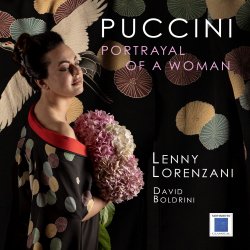
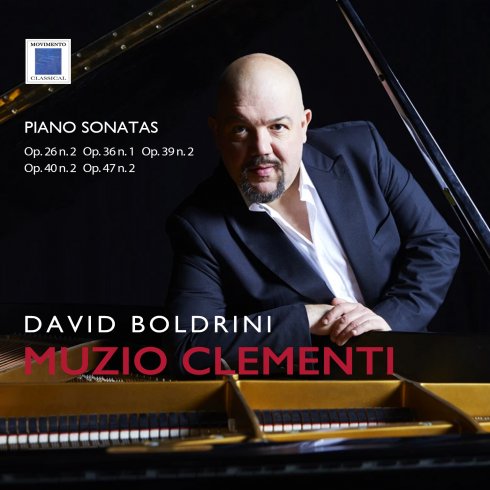
Piano Sonatas
Among Muzio Clementi's piano sonatas, the Sonata in B flat major number 2 of the work 47 certainly occupies an important place if only because it was Clementi himself who presented it in Vienna, in the presence of Emperor Joseph I and his rival of the day W. A. Mozart . The incipit was traced and introduced by Mozart as the beginning of the Magie Flute symphony . Clementi, who had been harshly criticized by Mozart, was very struck by this attitude on the part of the Salzourg genius. In turn, he demanded that the phrase: alter tulit honerem be included in the printed edition of the aforemen tioned Sonata with the aim of indicating the wrong right away . The Sonata op. 47 n. 2 in classical form, permeated by a brilliant character, develops through constructs derived from the initial theme made up of repeated notes and quatrains of si xteenth s. The second movement can be defined as gallant for its simplicity and lightness, while the finale in the form of a Rondo unfolds on a descending movement of quatrains of sixteenths which is contrasted by another ascending movement entrusted to the left hand in broken octaves. The Sonata in G major op. 39 n. 2 also in classical form, is characterized by orchestral writing, this whole composition almost seems like a project for a symphony due to the idioms used typical of string instruments and wind instrum ent s. From this we understand that Clementi had weil understood the expressive possibilities of the new instrument and that he turned to it with the romantic need to recreate the effect of the orchestra .Acantabile theme based on an interval of a fourth and a third develops like a torment between the part s. The bass presses on with a usual note repeated like a pedal, as often happens in a quartet or orchestra . Throughout the first movement the fundamental piano stylistic features of the performance practice of the time are present, the skilful use of arpeggios, octaves and scales is never aimed at pure virtuosity, instead the search for particular sounds and effects is constant. timbral and expressive. The main theme is exposed through a skilful use of harmony counterpoint and polyphony. Sometimes, during the course of the first movement, the main notes ofthe initial idea surprise us by emerging from an alternating movement of quatrains of the bass, while other fascinating imitative processes derived from it are highlighted by the fundamental notes of some arpeggios in quatrains of sixteenths. The second half is of a sentimental, meditative nature. The th ird movement, Rondo is a typical ending in the style of J. Haydn. According to Viennese fashion, the finale was the piece in which the rhythm and improvisational aspect dominated the scene uncha llenged . The wealth of harmonically arduous contents, the unusual and interrupted paths , make this rondo a composition full of surprises and twists that culminate with a festive and victorious fanfare. The Sonata op. 36 no. 1 in A major is unusually composed of two movements: The first half presents a first theme of an exploratory narrative nature and a second of a military martial character, some episodes lead us back to Beethoven's thoughts, for example the writing of the tenth Violin Sonata. The Sonata ends briefly with a polyphonic virtuosic Presto which is very reminiscent of some typical ideas of the melodic and contrapuntal inventiveness exhibited in the studies of the Gradus ad Parnassum. The scales, arpeggios and octaves are used with purposes expressly required by the potential of the new instrument with a clear vision of the new technique. We can also glimpse in embryo the idea of what Beethoven, Mendelssohn, Schumann , Lizst would be able to codify years later with the affirmation of the modern piano, using the instrument as a possible imitator ofthe orchestra.
A poignant ltalian-style melody opens the Sonata in F sharp minor op. 26 n. 2, even in this Sonata , of which the second movement was much appreciated by Beethoven, the modernity of the writing absolutely aimed at romantic pianism is surprising . Some hints of Mozart 's poetics echo in the coda of the first movement when the left hand crosses the right, bringing to mind the sonatas in C minor K 457 and the Sonata in E minor for violin. A pathetic second movement illuminates this splendid composition with a pale light which ends with a swirling Presto finale characterized by the whirlwind of descending arpeggios, double thirds and a brief melodic idea in octaves of a clear romantic nature, which several times returns to calm the gloomy and impetuous tones that authoritatively close the sonata with an inexorable descending arpeggio of octaves. The Sonata op. 40 n. 2 deserves a separate discussion in which Clementi, while keeping the fundamental cornerstones of the Sonata form intact , overturns the classical scheme and introduces an initial adagio, as happens in Haydn's great symphonies, and already in Beethoven 's opus 13. This novelty helps to create that emotional tension in which all the energies are gathered in a moment of great dramatic stasis before flowing out in the whirlwind of an Allegro with fire in Sonata form . In this composition which is more like a fantasy, almost improvisational freedom characterizes the second movement , which is sadly pathetic of a recitative nature, a moment of great emotional pathos from which comes the thunder which constitutes the dominant idea that will lead to the end. A dramatic trill in B minor , an obsessive warning, interrupts the meditative narrative of the second movement, and flows into an Allegro made up of canons in tercets, and sudden scales with continuous references to the classical stru cture . The urgency of a new thought seems to loom, the allegro is interrupted again and after a moment of quiet and recitative, a real storm announced by the terrible trill seems to break loose in the final Presto, hitting with dramatic destructive force and closing the Sonata with a violent descending B minor arpeggio .

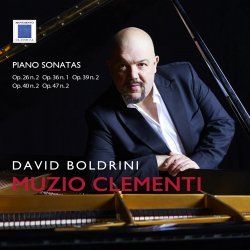
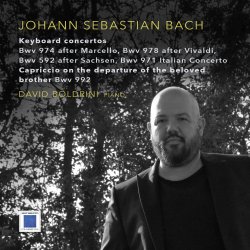
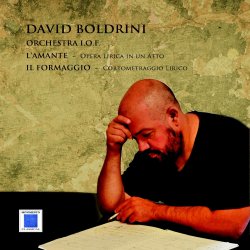
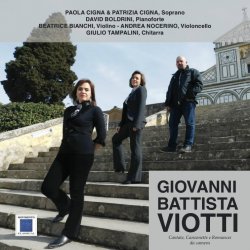
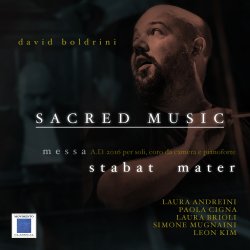
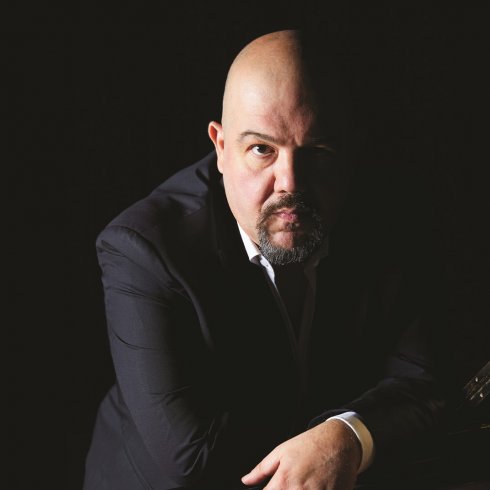
DAVID BOLDRINI
He graduated in piano at the Conservatory Cherubini in Florence in the class of Lidya Rocchetti with full marks, honors and honorable mention.
At the same time he graduated in organ and organ composition at the same conservatory studying in the class of M. Mochi .
He thus began to follow the master classes held by Bruno Canino at the Marziali Academy of Seveso and by the “Trio di Milano” at the music school of Fiesole. He also attended the two-year course held by the piano duo Moreno - Capelli , at the “la Musica Interna” in Bologna. He was an effective student of numerous master classes including those held by P. Badura Sckoda at Villa Medici in Milan, Bruno Canino at the “gli Amici della musica” in Florence and Fabio Bidini in Arezzo .
In 2001 he studied piano with Vincenzo Balzani at the Cantù music school, and then he attended the three-year course at the Imola piano academy " Incontri con il Maestro ", in the chamber music class of Pier Narciso Masi .
He also studied piano for four years at the Sesto Fiorentino music school with Pier Narciso Masi .
Winner of numerous competitions. In 2001 he was awarded the "LIONS" prize as the absolute winner of the “Città di Follonica” piano competition, in 2003 he was awarded as best chamber pianist at the “Luigi Nono competition” in Turin ( Venaria Reale ). In the same year he was first overall at the Rospigliosi competition and second overall at the International Valtidone competition in Piacenza .
In 2004 he was the absolute winner of the “Di Vicopisano” and “Nuovi Orizzonti” piano competitions in Arezzo.
Regularly invited as a soloist and as a chamber musician in prestigious associations, he performed for “L'associazione Fioravanti” of Prato, the “Lycaeum of Florence , the “i Concerti del Cicognini” of Prato, “Associazione musicale lucchese”, “Estate Frentana”, “Festival Barocco internazionale - Orchestra sinfonica” of Sanremo , “I concerti del museo casa Ivan Bruschi” of Arezzo, “Associazione giovani musicisti fiorentini Museo Chiesa di Dante Alighieri”, “Associazione Damaris” of Pistoia, “Teatro del lido” of Ostia, “Agimus Roma”, “Campus internazionale di musica” of Latina, Music Week in Brussels.
Chamber musician requested by internationally renowned artists, he collaborates alongside Maria Luigia Borsi, Andrea Bocelli, Paolo Chiavacci, Brad Repp, Augusto Vismara.
Since 2005 he has been the artistic director of the “Associazione Ramimusicali” of the homonymous concert season and of the competition which has reached its third edition this year.
